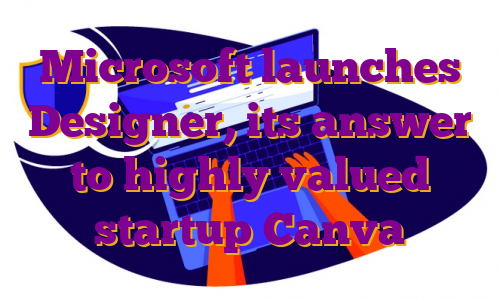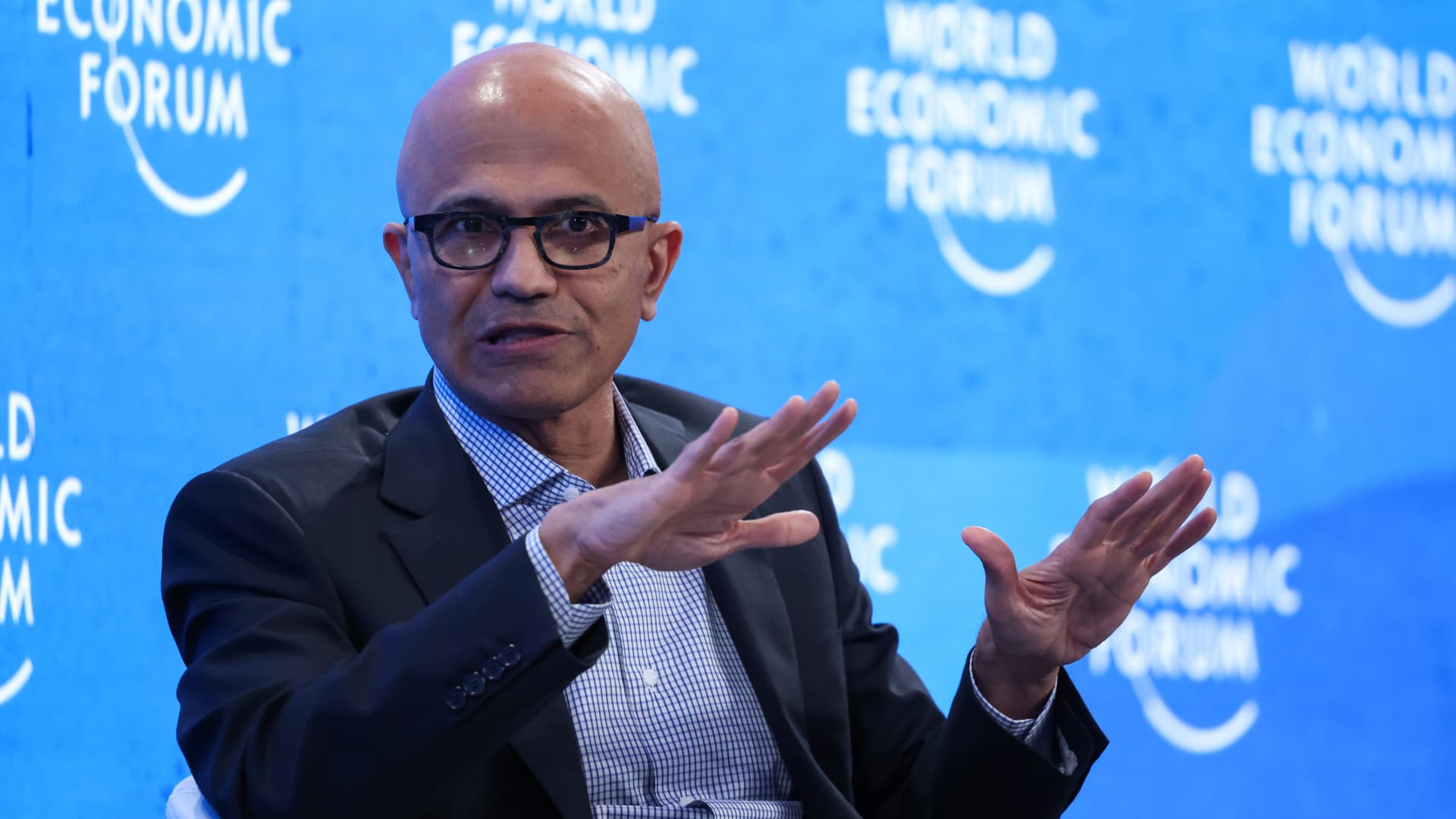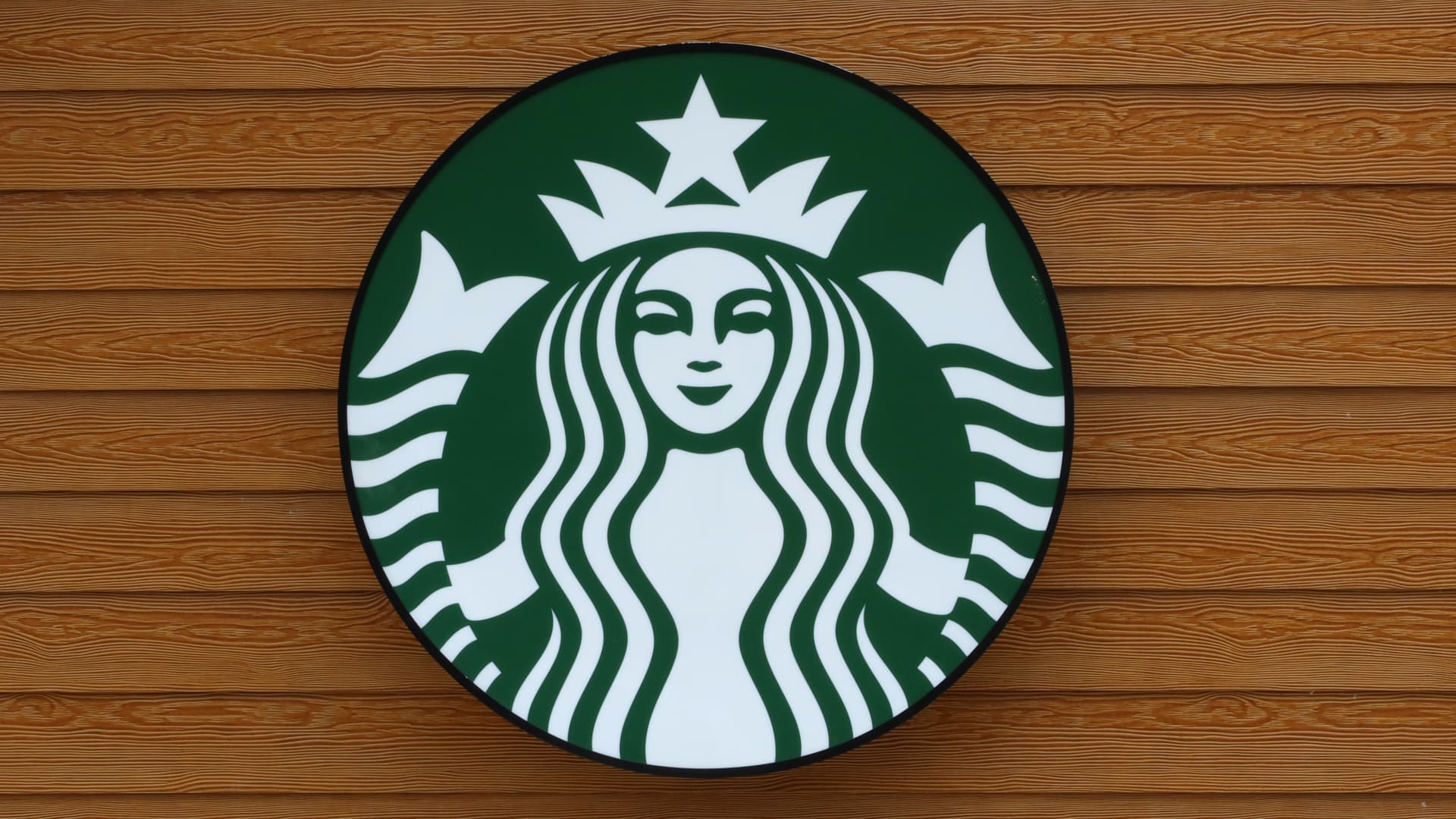Microsoft is launching a simple graphic design app called Designer that will be available for free and as part of Office productivity software subscriptions, the company said Wednesday.The software represents an alternative to Canva, a design app boasting more than 100 million monthly active users. Based in Sydney, Canva is one of the world’s most valuable startups, boasting a $40 billion post-money valuation as of last year. But one of the startup’s investors, Blackbird Ventures, reportedly lowered its valuation of the company to $25.6 billion earlier this year as inflation and recession fears caused software stock prices to tumble.Microsoft has sought to demonstrate the value of Office subscriptions by adding new capabilities, and earlier this year it raised the prices of some bundles aimed at businesses. Office controls the market, and companies are constantly attempting to topple the leader in the category. The closest competitor is Google. On Tuesday Google Cloud CEO Thomas Kurian said Workspace had more than 8 million paying subscribers, up from over 6 million as of April 2020.Increasingly, Canva is going after core parts of Office. It introduced an alternative to the PowerPoint slide development program in 2021, and in September it brought out a tool to edit documents, challenging Word. Canva says it has 55,000 paid teams using its software including at Amazon, FedEx, PepsiCo, Pfizer and Salesforce.With its Designer app, Microsoft is initially aiming at consumers, a spokesperson told CNBC in an email. But the application could also prove useful to workers inside of companies, government agencies and schools, where Microsoft has a larger base of users. Microsoft could expand Designer to additional markets, including enterprises, if it perceives sufficient interest, the spokesperson said.In the current economy, some companies have sought to save money by reducing the number of software providers they count on, and adding Designer to commercial Office subscriptions at some point might help companies cut out payments to Canva, for one.”No company is better positioned than Microsoft to help organizations deliver on their digital imperative so that they can do more with less,” as Microsoft CEO Satya Nadella said on a conference call with analysts in July.The launch of Designer might also make Microsoft bump up against Adobe, which fields the free Adobe Express tool that features templates and stock images. Canva is “where beginners get started before they come to Adobe,” Jonathan Vaas, Adobe’s vice president of investor relations, said at a Bank of America event in January.But Microsoft has a close partnership with Adobe, and the two companies have more than 30 product integrations. “Adobe remains our key, at-scale strategic partner and this new consumer design application does not change our engagement with Adobe in any way,” a Microsoft spokesperson told CNBC in an email.People can draw on templates to come up with social media posts in Designer, Liat Ben-Zur, a Microsoft corporate vice president, wrote in a blog post. Social media is also probably the most popular medium for which people design in Canva, said Cliff Obrecht, the startup’s co-founder and operating chief, in an interview last month. But Obrecht said Canva is “not competing against Microsoft.” Its primary competitor is Adobe, he said.Designer can automatically come with visual designs when people enter text, thanks to an integration with DALL-E 2 artificial intelligence software from Microsoft-backed startup OpenAI. The two companies don’t want Designer to surface inappropriate content. OpenAI took out the most explicit sexual and violent content from AI training data for the system, while Microsoft recently implemented a change that helps to generate more diverse results, Ben-Zur wrote.For now, people can join a waiting list for the free preview of Designer online. Once the app becomes generally available, Microsoft will maintain a free tier, along with a premium version for those with Microsoft 365 Personal and Microsoft 365 Family subscriptions, the spokesperson said.WATCH: Two-minute drill: MSFT, UPS & PXD .
Exercise caution with zero-premium Medicare Advantage plans
Health insurers will flood the Medicare Advantage market again this fall with enticing offers for plans that have no monthly price tag.The number of so-called zero-premium plans has been growing for years, and they can appeal to retirees who live on fixed incomes. Experts say shoppers should exercise caution, because they might find better coverage at a relatively small monthly cost. “It’s not a one-size-fits-all program,” said Melissa Brenner, a broker in Charlotte, North Carolina. “You don’t want to look at a zero plan and just enroll in it.”Medicare Advantage plans are privately run versions of the government’s Medicare program for people who are age 65 and older or have certain disabilities. The annual enrollment window for 2023 Medicare Advantage coverage opens next week. A closer look at the coverage:A GROWING OPTIONNearly seven out of 10 people who enrolled in an individual Medicare Advantage plan with prescription drug coverage for this year opted for no-premium plans, according to the Kaiser Family Foundation, a nonprofit that studies health care issues. That’s up from around five in 10 in 2015. Kaiser also found that 98% of people eligible for Medicare had access to an Advantage plan with drug coverage that charged no premium.“They’re everywhere,” said Bob Rees, vice president of Medicare sales for the online insurance broker eHealth.Medicare Advantage shoppers had plenty of choices in general. Kaiser found that the average person eligible for Medicare had access to 39 Advantage plans during last fall’s enrollment window, including those that charged premiums.For 2023, about 57% of Medicare Advantage plans will have no premium, according to the Centers for Medicare and Medicaid Services. KNOWING THE CATCHThe adage that nothing in life is free applies here.The plans charge no premium, but most people who qualify for Medicare will still pay a monthly cost for the program’s Part B, which covers doctor visits and other outpatient care. That usually comes out of Social Security checks and will total $164.90 next year. Government funding helps insurers offer an array of Medicare Advantage plans with no premiums and extras like dental or vision care that are not covered in traditional Medicare. One key difference from traditional Medicare: These plans usually require patients to visit doctors, hospitals or pharmacies in a network. Some plans may not cover care received outside those networks. WHAT TO CONSIDERBefore looking at a plan’s price, Brenner recommends that shoppers check to see whether their doctors are in the network and how regular prescriptions would be covered. Then they should look at coverage basics. That can include what sort of copays would come with a specialist visit or a hospital stay. They also should look at the annual out-of-pocket maximum.Some of these payments might be higher with a plan that has no premium, so customers could lose any savings if they use the coverage frequently.“There’s always going to be a give and take,” said Brenner, an independent broker who specializes in Medicare Advantage. The federal Medicare.gov website lets visitors compare plan coverages, including for prescriptions.THE CHALLENGESA plan that charges no premium may wind up being a bargain for someone who is relatively healthy. But it can be hard for shoppers to predict what specialists they may need to see or if they will want access to, say, an out-of-state cancer hospital in a given year. “Older people tend to get sick and use services, so it’s a gamble,” said Tricia Neuman, a Kaiser Family Foundation Medicare expert.Sometimes even routine expenses will stick out.Charles Kolton picked a zero-premium plan several years ago but was disappointed with the limited dental coverage that came with it. He later switched to a plan that charges $24 a month but also pays for up to $2,000 in dental costs, or roughly double what his previous option covered. “You can rack up these dental bills pretty quickly,” the 79-year-old North Carolina man said.DEADLINESPeople will have from Oct. 15 until Dec. 7 to pick a new plan or decide whether they want to keep the same coverage. Rees, the eHealth executive, warns shoppers not to wait until December. There’s generally a big rush to sign up at the end. Late shoppers can get locked out if they haven’t chosen a plan already. Nearly half the people eligible for Medicare enroll in Medicare Advantage plans, according to Kaiser. People also can stick with traditional Medicare and sign up for supplemental coverage, which generally comes with a higher premium than an Advantage plan. For Medicare Advantage shoppers, Neuman expects that insurers will continue to offer more zero-premium plans in 2023 as they push to grow enrollment.“Plans understand that seniors are focused on premiums,” she said. ———Follow Tom Murphy on Twitter: @thpmurphy ———The Associated Press Health and Science Department receives support from the Howard Hughes Medical Institute’s Department of Science Education. The AP is solely responsible for all content. .
Premium products take priority as companies battle cost-of-living
“As we create more premium beverages, it becomes more difficult for customers to replicate it at home and we think that helps with the concept of trade down,” Starbucks CFO Rachel Ruggeri told CNBC’s “Squawk Box” on Aug. 3.Gary Hershorn / Contributor / Getty ImagesPersonalized coffees, “prestige” skincare and “elevated” sauces and spreads are just some examples of how companies like Starbucks, Unilever and Kraft Heinz are tilting their focus toward premium products — and consumers appear to be loving it.But why are companies zooming in on their pricier offerings when consumers are feeling the effects of the biggest inflation shock in decades?related investing news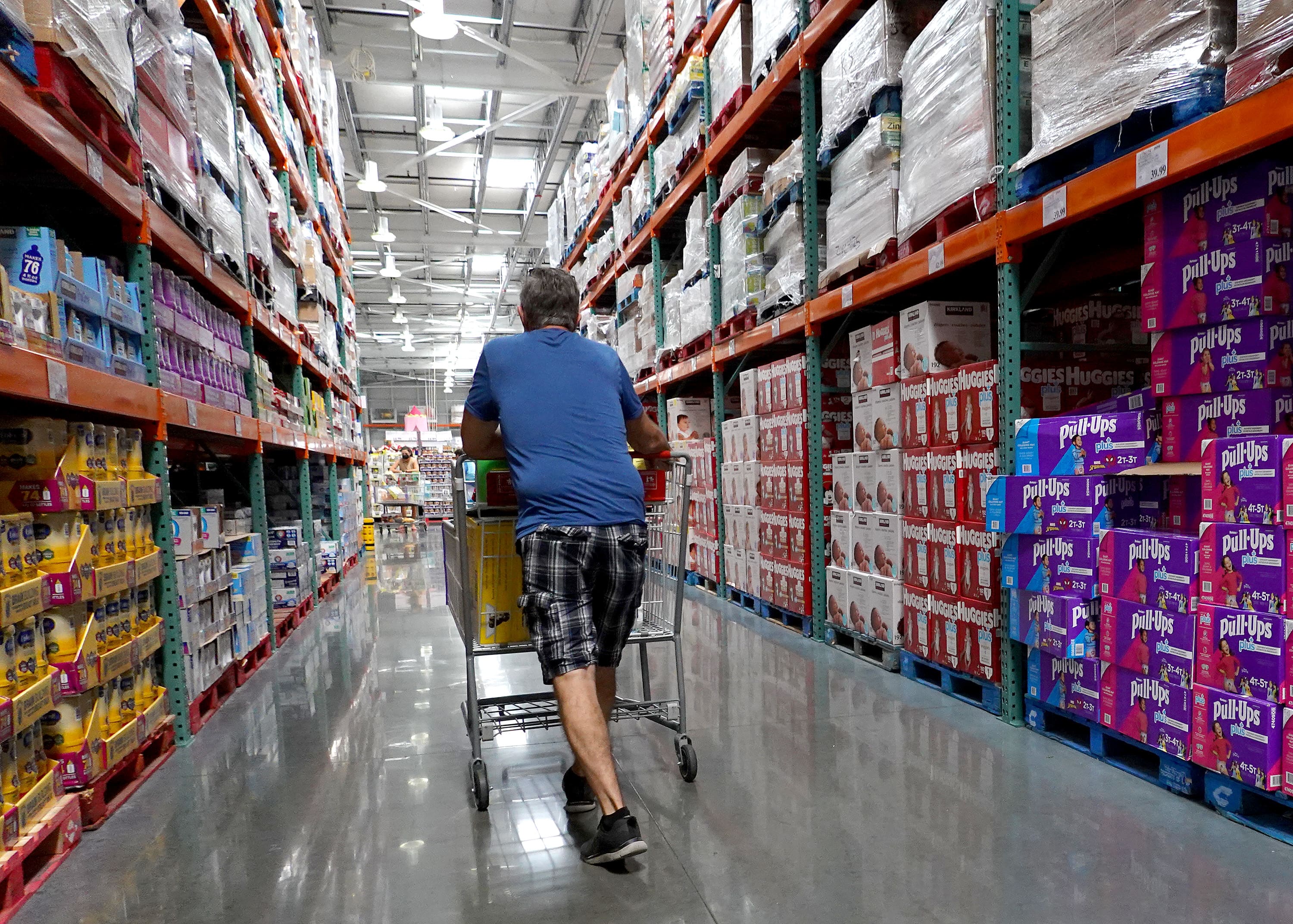
What to expect when Costco reports earnings after the closing bell Thursday”Customer insight is key for consumer businesses as the cost of living squeeze tightens,” Paul Martin, KPMG’s U.K. Head of Retail, told CNBC.”Whilst it’s true that some consumers are having to increasingly turn to value products and watch every penny, it is also the case that other consumers are nervous about the economic outlook but still have money to spend and are in essence trading down to premium products,” Martin said.”For example, swapping meals out for premium meals in. Whilst this group will also look to save money via the value essentials, they won’t be filling the basket solely with them,” he said.’An offering that’s worth paying for’Starbucks reported record customer counts and sales in the last quarter, beating Wall Street expectations. The results appear to reaffirm the view that some customers aren’t trading down or reducing their spending despite the increasing cost of living.Designing bespoke products is key to upping customer engagement even when money is tight, Starbucks CFO Rachel Ruggeri told CNBC’s “Squawk Box” on Aug. 3.”As we create more premium beverages, that’s more difficult for customers to replicate at home and we think that helps with the concept of trade down,” Ruggeri said. “It may mean that maybe a customer doesn’t come as frequently, but we want to ensure that we have reasons for the customers to come into the stores and interact with us.”Giving customers more flexibility also helped to sell more expensive products and pass on higher costs, Ruggeri said. “We’ve been able to do that through our personalization, which is a choice, and what we’ve seen so far is our demand is strong. And that tells us that we have an offering that’s worth paying for,” she said.The focus on premium products isn’t unique to the largest coffee chain in the U.S.Kraft Heinz is getting in on the luxury market with the launch of its HEINZ 57 Collection in July. The “chef-inspired” condiments are “designed to add magic to the culinary experience,” according to the company.This came as the company lifted prices by more than 12% in response to higher transportation, labor and ingredients costs amid rising inflation.
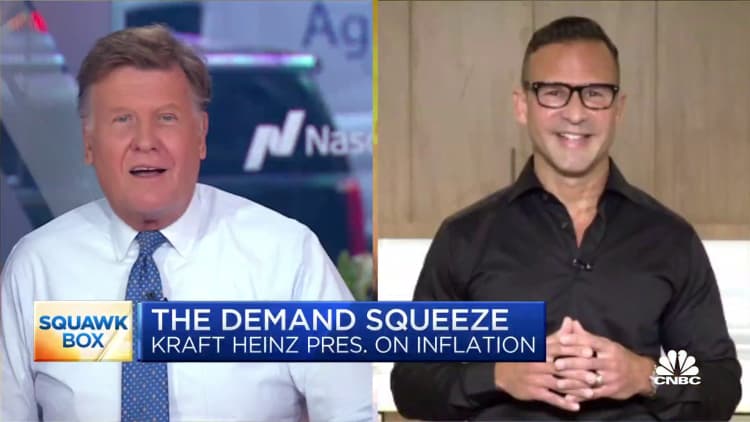 The introduction of more premium products is in addition to redesigns of classic products, according to the company’s U.S. president Carlos Abrams-Rivera.”One focus is how do we optimize formulas to bring in ingredients that are cheaper,” Abrams-Rivera told CNBC’s “Squawk Box” on July 28. “And how do we customize our products to the different consumers so they can access different products at different price points.”Treading a similar path is Mondelez. The company announced in June a deal to acquire organic-focused Clif Bar & Company, while all the company’s 2021 acquisitions — Hu Master Holdings, Lion/Gemstone Topco and Gourmet Food Holdings — were described as “premium” in its second-quarter earnings report.’Value faces a boom and so does premium’Unsurprisingly, consumers are also reliant on cheaper products, which companies are also sensitive to.McDonald’s, for example, attributed some of its growth in the U.S. to its value products in its Q2 2022 earnings report.Other companies are looking to attract both ends of the market by focusing on higher and lower-priced products.Nestle CEO Mark Schneider told investors in the company’s half-year results earnings call that the approach has been used before.”What we’re seeing with the current situation is similar to what happened in previous economic slowdowns and downturns,” Schneider said. “We pay attention to premium products but we also pay attention to affordable products. By covering both ends of this spectrum we’re doing well and we’re serving those needs.”Appealing to the widest possible customer base is key to maintaining and growing profits in the current economic climate, according to KPMG’s Martin.”In this landscape, value faces a boom and so does premium. Supermarkets recognize it, including the discounters, who are expanding their core value ranges, but also beefing up their premium proposition. Their aim is to capture and retain all of the trade-down audiences,” Martin said.Driving desirability and salesUnilever CEO Alan Jope told CNBC’s “Squawk Box” that the company was seeing a mixture of customers trading up and trading down.”The premium ranges in our portfolio are actually doing very well … We are seeing some downtrading – that’s on pack size, where people are moving to more affordable formats,” he said on July 26.In 2014, Unilever launched Prestige, a luxury arm of the conglomerate that now includes Dermalogica, Tatcha and Paula’s Choice.Described as “a string of pearls” by Executive VP and Group CEO Vasiliki Petrou in December, the model relies on “a certain level of scarcity” to drive desirability and sales.So far, it appears to have worked. Beauty & Personal Care grew 7.5% in the last quarter, driven by “strong growth” in Prestige Beauty and Health & Wellbeing, according to the company’s Q2 2022 results announcement.A focus on premium products can also be a more palatable means of tackling inflation costs compared to reducing items or packaging sizes, according to EY global consumer leader Kristina Rogers.”There is a limit to these actions and considering that input costs continue to rise, companies are looking at how to expand the value of their products,” Rogers told CNBC.”The only way to grow is therefore to go the premium and added value route. Companies need to demonstrate the added value of their brands and give consumers a good reason to buy higher-priced products,” Rogers said.”Companies are focusing on increasing the features of their product to extend consumers’ willingness to pay. These features include brand building, higher quality products, sustainability, or health features, to help validate a higher premium to be charged,” she added. .
The introduction of more premium products is in addition to redesigns of classic products, according to the company’s U.S. president Carlos Abrams-Rivera.”One focus is how do we optimize formulas to bring in ingredients that are cheaper,” Abrams-Rivera told CNBC’s “Squawk Box” on July 28. “And how do we customize our products to the different consumers so they can access different products at different price points.”Treading a similar path is Mondelez. The company announced in June a deal to acquire organic-focused Clif Bar & Company, while all the company’s 2021 acquisitions — Hu Master Holdings, Lion/Gemstone Topco and Gourmet Food Holdings — were described as “premium” in its second-quarter earnings report.’Value faces a boom and so does premium’Unsurprisingly, consumers are also reliant on cheaper products, which companies are also sensitive to.McDonald’s, for example, attributed some of its growth in the U.S. to its value products in its Q2 2022 earnings report.Other companies are looking to attract both ends of the market by focusing on higher and lower-priced products.Nestle CEO Mark Schneider told investors in the company’s half-year results earnings call that the approach has been used before.”What we’re seeing with the current situation is similar to what happened in previous economic slowdowns and downturns,” Schneider said. “We pay attention to premium products but we also pay attention to affordable products. By covering both ends of this spectrum we’re doing well and we’re serving those needs.”Appealing to the widest possible customer base is key to maintaining and growing profits in the current economic climate, according to KPMG’s Martin.”In this landscape, value faces a boom and so does premium. Supermarkets recognize it, including the discounters, who are expanding their core value ranges, but also beefing up their premium proposition. Their aim is to capture and retain all of the trade-down audiences,” Martin said.Driving desirability and salesUnilever CEO Alan Jope told CNBC’s “Squawk Box” that the company was seeing a mixture of customers trading up and trading down.”The premium ranges in our portfolio are actually doing very well … We are seeing some downtrading – that’s on pack size, where people are moving to more affordable formats,” he said on July 26.In 2014, Unilever launched Prestige, a luxury arm of the conglomerate that now includes Dermalogica, Tatcha and Paula’s Choice.Described as “a string of pearls” by Executive VP and Group CEO Vasiliki Petrou in December, the model relies on “a certain level of scarcity” to drive desirability and sales.So far, it appears to have worked. Beauty & Personal Care grew 7.5% in the last quarter, driven by “strong growth” in Prestige Beauty and Health & Wellbeing, according to the company’s Q2 2022 results announcement.A focus on premium products can also be a more palatable means of tackling inflation costs compared to reducing items or packaging sizes, according to EY global consumer leader Kristina Rogers.”There is a limit to these actions and considering that input costs continue to rise, companies are looking at how to expand the value of their products,” Rogers told CNBC.”The only way to grow is therefore to go the premium and added value route. Companies need to demonstrate the added value of their brands and give consumers a good reason to buy higher-priced products,” Rogers said.”Companies are focusing on increasing the features of their product to extend consumers’ willingness to pay. These features include brand building, higher quality products, sustainability, or health features, to help validate a higher premium to be charged,” she added. .
‘Avatar’ returns to theaters as Disney hypes James Cameron’s long-delayed sequel
AvatarSource: Walt Disney StudiosThe Na’vi return to the big screen this weekend as Disney looks to reignite interest in its newly acquired Avatar franchise, three months before the debut of the long-delayed sequel, “Avatar: The Way of Water.”Bringing the highest-grossing film of all time back to theaters has two purposes for Disney: drum up excitement for “The Way of Water” and fill a vacant spot on the theatrical calendar. The sequel is one of four due over the next decade.The rerelease of the original film is a sort of litmus test for whether audiences still want to visit its eco-conscious science fiction world.”Many questions have been asked about the film’s pop culture legacy over the past decade, but we also have to remember that James Cameron has been doubted before and proven many wrong,” said Shawn Robbins, chief analyst at BoxOffice.com.Directed by Cameron, the mastermind behind “Titanic” and “The Terminator,” “Avatar” opened in late 2009 to wide acclaim and massive financial success, eventually earning nine Oscar nominations. But it never captured the cultural relevance that Star Wars or the Marvel Cinematic Universe – both also owned by Disney – have enjoyed. Toy sales fizzled and cosplayers donning heavy blue makeup at pop culture fan conventions have become few and far between.”Naturally all eyes will be on the box office performance this weekend, as this may serve as an indicator of audience interest in the December release of ‘The Way of Water,'” said Paul Dergarabedian, senior media analyst at Comscore.”Avatar” captivated audiences more than a decade ago, in part because of the technology that Cameron helped develop to film and animate the movie. The film was shot using the Fusion Camera System, which was created by Cameron and cinematographer Vince Pace. Academy Award-nominated films like Martin Scorsese’s “Hugo” and Ang Lee’s “Life of Pi” also utilized this camera system.Previous systems used two cameras because filmmakers had determined that the human brain processed different information from different sides of the brain. So, one part of the brain would process the image’s movement, while the other would process what was happening in the image.Set more than a decade after the events of the first film, “Avatar: The Way of Water” tells the story of the Sully family.DisneyCameron and Pace devised a camera that could capture images the same way that a human eye does. The results were breathtaking — just look at the ticket sales. During its initial run, “Avatar” snared $2.78 billion globally. It added additional ticket sales throughout the years through rereleases, and reclaimed the box-office crown from “Avengers: Endgame” in 2021 when it was redistributed in China, topping $2.84 billion.The majority of tickets sold for the film were for 3D showings, which tend to be more expensive than regular tickets. These premium tickets alongside, an extended nine-month run in theaters, helped bolster “Avatar’s” total box-office haul.”We know that IMAX and other [premium format] screens are a major driver for the business now and going forward, but 3D’s popularity in North America waned quickly in the years after the first ‘Avatar’s’ original release,” Robbins said. “With very rare exceptions, 3D simply began to turn off many moviegoers for a variety of reasons — some of which filmmakers can control, but not all.”This “3D gold rush” in the wake of “Avatar,” as Dergarabedian calls it, led to an oversaturation of the market. Many of the 3D releases were conversions of movies that were not well suited for the format and, thus, quality declined and so did interest from audiences.While 3D films have fallen out of favor with domestic audiences, they remain exceptionally popular internationally – especially in China. Indeed, “Avatar” made the bulk of its money outside of the U.S. — a whopping $2.08 billion.”If I’m reading between the lines for this distribution plan, it seems like Disney and 20th Century Studios are gauging the state of 3D’s branding and they may use the box-office results to inform how ‘The Way of Water’ is handled,” Robbins said. “While Cameron will want to push the 3D version for fans who want to see it the way he filmed it for, it’s also hard to ignore the very large audience out there who has never become as enamored with the format as they have with other 2D premium viewing options.”Current estimates for the film’s rerelease range from $7 million to $12 million, with box-office analysts saying a figure in the mid-teens would be “huge.” It’s also facing stiff competition from the historical action epic “The Woman King,” which had a strong opening this past weekend and could be primed for a long, successful run at the box office.”It would be a massive understatement to say that there is a lot riding on the ‘Avatar’ brand and with at least three more filmed installments on the way,” Dergarabedian said. “The rerelease of the original this weekend will be the linchpin for what the future holds for the universe of Pandora and beyond.” .
Start-up harnesses caseins and dairy fatty acids to develop ‘next generation’ of cheese
The Paris-based company said it is creating caseins and dairy fatty acids with precision fermentation in order to develop cheeses that are virtually indistinguishable from the real thing, without the environmental, animal welfare and food safety problems associated with animal agriculture.After the successful pre-seed round, it now plans to launch its first industrial production of animal-free dairy ingredients within the next 24 months as a B2B company. “We will sell a ‘cheeseable milk’ solution to food partners,” a spokesperson explained to FoodNavigator. “We will offer formulated ingredients and the formulation know-how to help them develop and produce innovative, tasty and sustainable dairy products.”To make the caseins and dairy fatty acids, the Paris-based company programmes yeasts to produce milk proteins and fatty acids in exchange for mineral and plant nutrients in bioreactors. “Our animal-free ingredients have the same functional, nutritional and organoleptic characteristics as conventional animal ingredients,” we were told. “We then harvest these milk proteins and fatty acids and mix them with other ingredients to develop a reconstituted milk, which will coagulate and turn into cheese by fermentation. We are developing multiple subtypes of casein. Part of our process will be protected by our IP.” ‘Going beyond what’s available in the plant-based reign’The international cheese market is worth $200B and growing. Nutropy said its innovative approach, and its close collaboration with industrial cheese producers and French cheese specialists, mean it is primed to lead the development of a B2B ‘cheesable milk solution’ producing many types of cheese to expand the global cheese market to new frontiers.“As cheese lovers, we know the importance of cheese in our gastronomic culture and want to offer consumers a wide range of cheeses free of lactose and dietary cholesterol that are produced in an environmentally friendly and sustainable manner,” said Nutropy CEO Nathalie Rolland.The first products it is developing are premium aged French cheeses similar to Camembert. “Thanks to our tech and expertise we can develop many types of cheeses,” the spokesperson continued. “We decided to develop dairy fatty acids to improve the sensory profiles of our cheeses by going beyond what’s available in the plant-based reign and bringing us as close as possible in taste to animal cheeses.”A growing number of companies are using precision fermentation to make cheese and milk alternatives. The differentiator for Nutropy’s business is its own unique technology to produce and formulate our ingredients, it claimed. “We are the only company to provide a complete animal-free ‘cheeseable milk’ solution for plug and play use by dairy producers. Only a few companies are developing caseins and dairy fatty acids and not all companies have a food science team working on the development of animal-free cheeses, especially complex, premium cheeses.”The quest for more environmentally sustainable production methods is obviously a big draw of the precision fermentation sector. Nutropy claimed its process has the potential to use significantly fewer natural resources and limit the greenhouse gases and water pollution that accompany animal-produced dairy products.“We have reason to believe our processes will consume significantly fewer resources and pollute less than their animal counterparts. We have data on the production of animal-free products through fermentation and we are discussing with consultants and universities to work together on an LCA of our process once we reach higher scales.”Precision fermentation start-ups acknowledge that achieving scale is a hurdle to commercialisation. What’s more, the European Commission is yet to approve its first product made this way. Nutropy is therefore intent to demonstrate that fermentation-derived milk ingredients are a thriving and promising domain that is supported by an ecosystem of startups, medium and large sized companies across the value chain and research institutions. “We are active members of this ecosystem, through both Nutropy and the non-profit organization founded by our CEO, Agriculture Cellulaire France/CellAg France. Furthermore, the fact that fermentation-derived ingredients are an essential player in securing food sovereignty and reducing our environmental impact three times a day has been recognized by the existence of many recent European grants for our subject.”The €2M pre-seed round was led by venture firms Beast, Big Idea Ventures and Trellis Road. The round was supported by VegCapital, FoodHack, Techmind, a few international business angels with experience in technology, food technology and agriculture and the French government.“We’ve long been convinced of the critical role of casein in the shift away from animal cheese products,” said Anna Ottosson, founding partner at Trellis Road.”We are excited about Nutropy’s technology and the quality of the products the team has been able to produce. I tried their premium cheese at one of our events, and the texture and taste were indistinguishable from premium, animal-based cheese. Using bio-identical ingredients is a game changer,” added Andrew D. Ive, Founder and Managing General Partner of Big Idea Ventures. .

